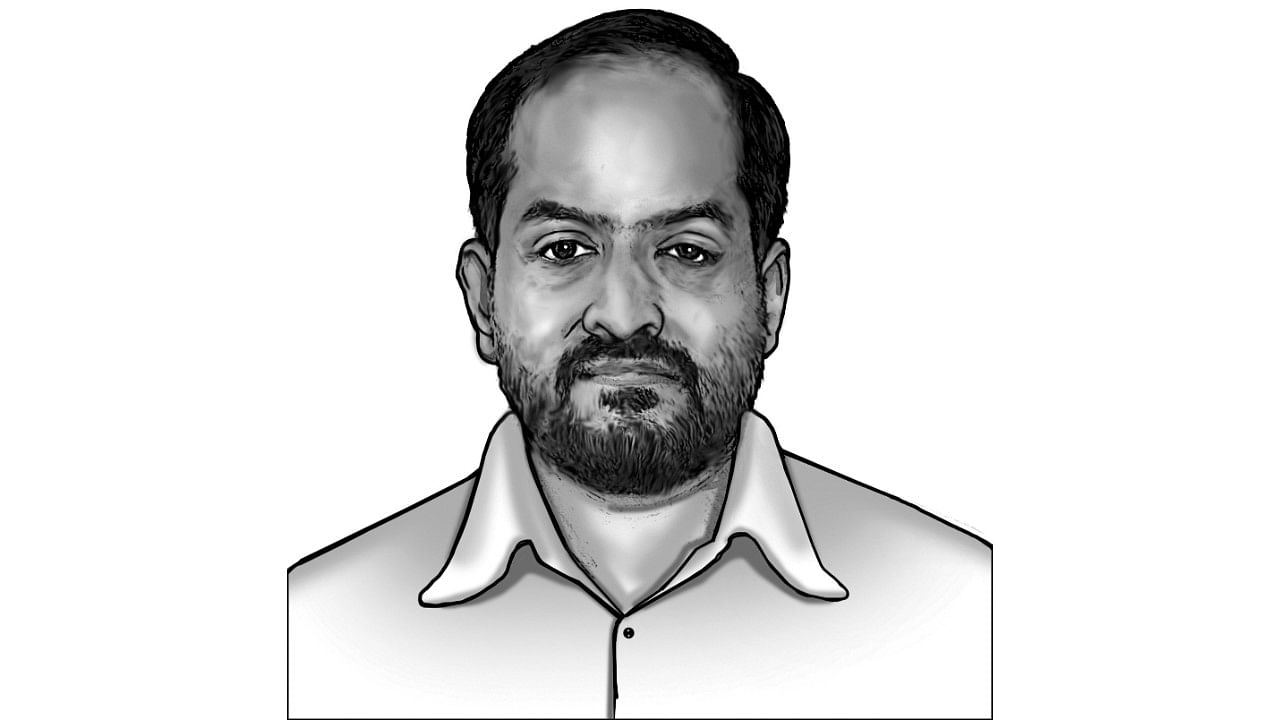
Venkatesh Nayak wakes up every morning thinking someone somewhere is hiding something.
Credit: DH Illustration
Call me a one-trick pony for repeatedly highlighting the opacity in elections conducted in recent years through these columns but the newer controversies that crop up do not augur well for our democracy.
The latest is around the allegedly high levels of battery charge in some of the control units of EVMs used in Haryana. Counting agents noticed this when the machines were switched on to ascertain the people’s mandate.
However, no such complaints surfaced in J&K where voting took place simultaneously, on similar machines.
The Election Commission of India’s (ECI) explanation – that the batteries carry the signatures of the candidates’ representatives when they are fitted into the EVMs – is not very convincing. The specifications of EVMs and VVPATs their manufacturing companies submitted for obtaining patents do not contain any detailing about battery functionality.
The biggest disappointment about these controversies is the resistance of the electoral bureaucracy to releasing information that voters can use to either satisfy themselves and dispel suspicions or hold them accountable for wrongdoing.
Earlier this year (DH dated August 18, 2024), I had lamented the ECI’s dismissive response to my RTI application seeking voluntary public disclosure of the scrutiny reports that Returning Officers (ROs) submit after the polls.
This request was filed against the backdrop of the controversy about discrepancies in the voter turnout figures. Attaching a copy of their reply which advised me to approach the constituencies directly, I submitted RTI applications to the 28 ROs in Karnataka, seeking copies of the scrutiny reports from the 2024 Lok Sabha polls.
The ROs of Mandya and Tumakuru rejected my request claiming that those reports were locked up in the strong rooms and cannot be opened without a court order.
The Raichur RO noted that my information request (wherein I had referenced specific paragraph numbers from the ECI’s handbook for ROs) was not clear and ‘closed’ my case. The Chikkaballapura RO sent the minutes of the scrutiny meeting without any statistical data that is required to be filled as per ECI’s proforma published in the handbook. Almost 20 ROs are yet to respond, although the 30-day deadline expired last month.
I received some eye-popping information from Hassan, Karwar and Chitradurga. According to the Hassan RO, of the 17,36,610 registered electors, 13,48,966 had cast their vote. However, the candidate-wise tally of votes which the ECI has published for Hassan on its website totals up to 13,48,013 (including NOTA).
So, the EVMs had recorded 953 votes less than the RO’s figure of the total number of votes cast (excluding postal ballots). Even though this discrepancy makes little difference to the winning margin (42,649 votes), the ECI must explain why there is such a significant mismatch.
When Opposition parties demanded resumption of the past practice of publishing copies of Form 17C collected from every polling station, the ECI dismissed it saying they had been shared with their polling agents.
The Uttara Kannada RO’s reply to my RTI shows that only one polling agent each had turned up in as many as 488 polling stations in that constituency. The other candidates had just not sent any agent at all.
In Chitradurga, voting took place in 210 polling stations in the absence of a polling agent or when only one such was present in each of them.
Publishing the ROs’ scrutiny reports in the other constituencies might reveal how widespread this phenomenon was nationally. I am not even going into the complaints of polling agents in other states about the denial of Form 17C copies despite formal applications.
Rule 49S of the Conduct of Election Rules, 1961 states that such copies will be given only to polling agents present at the close of polls. So hardly anybody outside the electoral bureaucracy has access to the entire corpus of Form 17C data for the 2024 Lok Sabha elections.
Maharashtra and Jharkhand will go to polls next month. The ECI must publish Form 17C data from every polling station along with the RO’s compilation of the final voter turnout figures in every Assembly constituency.
Keeping them locked up, as if they are sarkari secrets, will only fuel more rumours and make us wonder if something is rotten in the state of elections in our country.